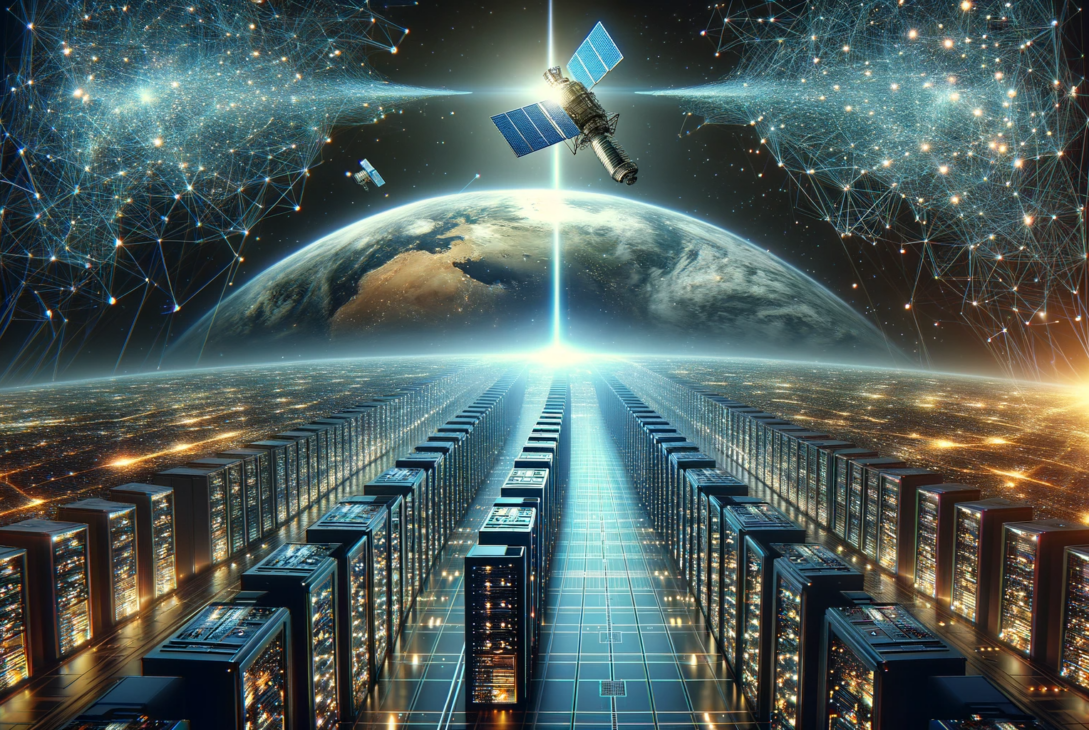In the digital era, our lives are deeply intertwined with technologies underpinned by a complex, often unseen infrastructure. This exploration delves into the expansive network of data centers, cables, and satellites, highlighting the hidden labor and environmental impact of our constant connectivity.
The Backbone of the Digital Age: Data Centers
Data centers, the physical hubs of the cloud, are integral to storing, processing, and distributing the massive data streams from businesses, governments, and individuals.
The Scale and Scope
Data centers, architecturally varied, are behemoths in both physical size and energy consumption. They operate on a 24/7 basis, demanding continuous power and sophisticated cooling systems to manage thermal output from high-performance servers. These servers, often rack-mounted, are the workhorses of data processing, housing processors, memory, and storage in a high-density environment.
Energy Efficiency and Cooling Techniques
The energy footprint of data centers is a crucial concern. Advanced cooling techniques, like liquid immersion or direct-to-chip cooling, are employed to enhance thermal management. These facilities often integrate renewable energy sources and employ advanced Power Usage Effectiveness (PUE) metrics to optimize efficiency.
Labor in the Shadows
Technicians, network engineers, and security staff form the core workforce in data centers. Their roles encompass server installation, network configuration, and cybersecurity management, ensuring data integrity and operational continuity.
The Veins of Connectivity: Cables and Networks
An intricate web of terrestrial and submarine cables forms the backbone of global data connectivity.
Terrestrial Networks
These predominantly fiber-optic networks utilize light for data transmission, offering high bandwidth and low latency. The physical infrastructure includes cable ducts, repeaters, and routing nodes, crucial for maintaining data integrity across vast distances.
The Undersea World
Submarine cables, composed of multiple fiber-optic lines, are sheathed in protective layers for deep-sea durability. Their installation requires specialized ships and remotely operated vehicles (ROVs) for laying and maintenance. The cables are susceptible to environmental factors and geopolitical issues, necessitating sophisticated routing and monitoring systems.

Photo taken from Airtel.
The Orbiting Network: Satellites
Satellites augment terrestrial networks, especially critical in remote and oceanic regions.
Communication and Navigation
Geostationary and low-earth orbit satellites support various applications, from global telecommunications to earth observation. They rely on advanced onboard systems for signal processing and ground stations for control and data relay.
Technical and Environmental Challenges
Launching satellites involves rocket propulsion systems, with considerations for orbital mechanics and debris mitigation. The lifespan of satellites is limited by fuel capacity and solar radiation exposure, influencing design and operational strategies.
The Environmental Footprint
The environmental impact of this infrastructure is multi-faceted.
Energy and Emissions
Data centers are among the highest energy-consuming facilities globally, with a significant carbon footprint. Efforts to mitigate this include transitioning to renewable energy sources and exploring carbon capture technologies.
Resource Utilization
The demand for rare earth metals and other materials for infrastructure construction poses sustainability challenges. This necessitates responsible sourcing practices and recycling initiatives to minimize environmental impact.
Technological Evolution in Digital Infrastructure
The future of digital infrastructure is being shaped by groundbreaking technological advancements, which are essential in addressing the growing demands and challenges of our digital world.
Cutting-Edge Data Center Technologies
Innovations in data center technology are crucial for enhancing efficiency and managing the increasing data load. Advanced machine learning algorithms are now being employed for real-time monitoring and management, optimizing data traffic and server performance. Innovative cooling solutions, such as immersion cooling, where servers are submerged in a non-conductive liquid, are revolutionizing thermal management in data centers.
Revolutionizing Submarine Cable Systems
The field of submarine communications is witnessing a technological revolution. New materials and designs are allowing for lighter, more durable cables with increased bandwidth capacities. The implementation of low-loss optical fibers and advanced amplification techniques are enabling longer spans between repeaters, reducing costs and maintenance requirements.
Satellite Technology Breakthroughs
The satellite industry is undergoing a transformation with the deployment of large-scale constellations of small, more cost-effective satellites. These constellations promise to provide global broadband coverage, including in previously unreachable areas. Advancements in propulsion technology and satellite miniaturization are pivotal in this evolution, allowing for more satellites to be launched on a single rocket, thereby reducing costs and increasing coverage.
Advanced Networking Technologies
Networking technology is continuously evolving to meet the demands of increased data flow and connectivity. Technologies such as 5G and beyond are providing unprecedented speeds and reliability for mobile and fixed networks. Software-defined networking (SDN) and network function virtualization (NFV) are revolutionizing how network services are deployed, managed, and scaled.
Energy Efficiency and Renewable Energy Integration
Energy efficiency is a key focus in the evolution of digital infrastructure. Data centers are increasingly integrating renewable energy sources, such as solar and wind, into their power mix. Battery storage technologies and smart grid systems are being developed to better manage energy use and improve the sustainability of these facilities.
The Technological Challenges Ahead
Despite the advancements, the journey towards a technologically advanced digital infrastructure faces several challenges.
Scalability and Reliability
As digital demand grows, scaling infrastructure while maintaining reliability is a significant challenge. This requires ongoing innovation in server technology, network capacity, and data storage solutions.
Interoperability and Security
With the proliferation of different technologies, ensuring interoperability while maintaining high-security standards is becoming increasingly complex. Developing robust encryption methods and secure communication protocols is crucial to safeguard against cyber threats.
Managing the Environmental Impact
While technological advancements are improving energy efficiency, the overall environmental impact of digital infrastructure remains a concern. Continued innovation in green technology and efficient resource utilization is essential for a sustainable digital future.
Conclusion: Embracing Technological Advancements
The future of our digital world hinges on embracing and further developing these technological advancements. Continuous innovation in data centers, submarine cables, satellites, and networking technologies will not only enhance our connectivity but also ensure that this growth is sustainable and efficient. As we move forward, the focus on technology will be paramount in addressing the challenges and maximizing the opportunities presented by our ever-evolving digital landscape.




